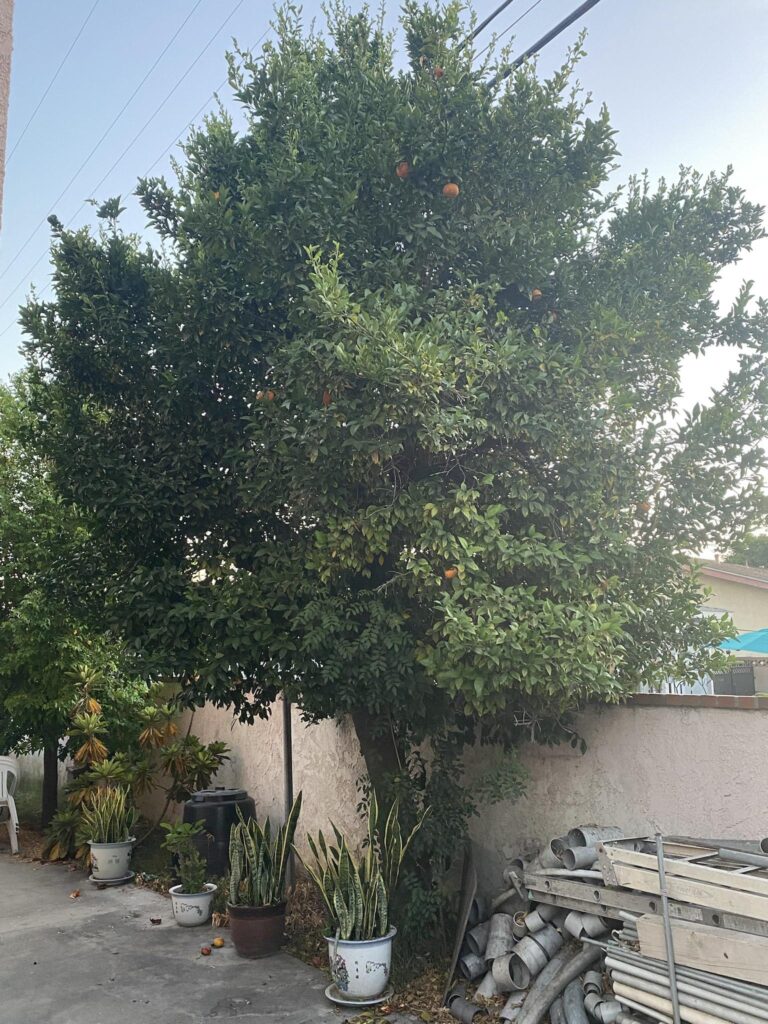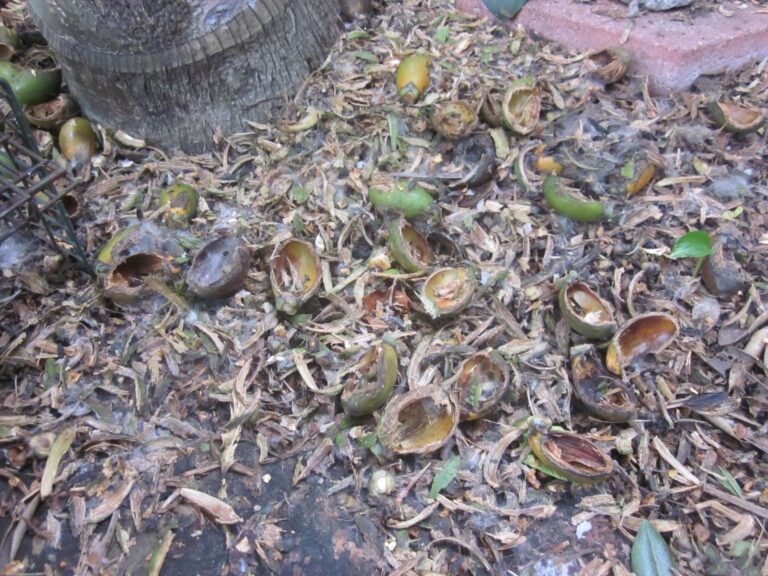Rats cause structural and aesthetic damage to the interior and exterior of homes. They contaminate food and carry diseases, risking your and your family’s health. It is crucial to address a rat problem as soon as you notice rat activity.
The Norway rat is the most common rat pest in the U.S., but in Florida, the roof rat aka palm rat or fruit rat is the dominant rat species. The tropical climate, miles of coastline, and agricultural facilities like cow-calf operations, hog farms, and citrus groves provide ideal conditions for the palm rat to thrive.
Roof rats are known to carry diseases, fleas, and ticks. More than 30 diseases can be spread by roof rats, including hantavirus, infectious jaundice, salmonellosis, tularemia, and food poisoning. The spread occurs when they urinate in your water, chew food in your pantry, or leave droppings on your countertops and appliances. They can also transmit diseases to any pets you have.
Palm Rat Appearance
The palm rat (roof rat), also known as the fruit rat and citrus rat is a relatively small rodent. Palm rats are slender and agile rodents, measuring about 6 to 8 inches in length, excluding their tail. They have dark gray or black fur on their bodies, while their bellies are usually lighter in color, ranging from gray to white.
Palm rats have a pointed snout and large, black, and shiny eyes, which are prominent on their heads. Their ears are relatively large and are sparsely covered in fur.
One of the most distinguishing features of palm rats is their long, thin, and scaly tail, which is longer than their body. The tail usually has a dark color similar to their body.
Palm Rat Habitat in Jacksonville, FL
Roof rats are one of the most common pests in Florida. Dr. William Kern, an associate professor in the department of entomology and nematology at University of Florida/IFAS Fort Lauderdale Research and Education Center (UF/IFAS FLREC) said roof rats are a “coastal phenomenon” usually not found beyond 100 to 300 miles from the coast. Florida has the longest coastline in the contiguous United States with 1197 statute miles. The furthest point in Florida from the ocean is where the Suwanee River crosses into Georgia at 74 miles.
Roof rats got their name because they are excellent climbers and prefer to nest above the ground (palm trees, citrus trees, etc). They are often seen on roofs, attics, trees, walls, trusses, and beams. Roof rats are usually part of a colony. If they can’t find a way to shelter up high, they will build nests in wood piles, basements, clutter, or shrubs. They prefer to have a roof of some kind over their heads.

Roof Rats in the House
Rats frequently seek refuge inside warm homes, which provide shelter from potential predators and close access to food sources. Both attics and garages are ideal nesting locations inside, while sheds and barns on private properties also provide adequate shelter for the rodents.
The pests gain entry to homes in a variety of ways. They can fit through any opening larger than 1/2 an inch in diameter, which means that small holes, gaps in doorways, and wall vents often serve as common entry points for the agile rats.
Roof rats are arboreal by nature so they prefer to be high above the ground. Excellent climbers, the rats typically gain access to homes by traversing over tree limbs. They can climb a variety house materials such as stucco, brick, wood, sheet metal, concrete, and dry wall.
Not only can they climb, but palm rats are adept swimmers. They can swim through sewer lines and use toliets’ as entry points. During the pandemic, unused second homes, condos, and apartments were especially vulnerable to roof rats gaining entry via the sewers.
Rat Damage to Fruit Trees

The roof rat has earned the nickname fruit rat for a reason. While the fruit rat is the dominate suburban pest rat, their presence often goes unnoticed. Once citrus season starts, people notice. In citrus, papaya, cantaloupe, and watermelon the characteristic damage is a circular hole about the size of a quarter or half dollar and the whole fruit hollowed out.
How to Use Rat Traps on fruit trees
To protect your fruit trees, tie several traps around the trunk of the tree with triggers pointing down (expanded trigger traps are best for tree use).
Since palm rats prefer to stay off the ground, another good place to set traps is on the stringer boards of fences, and the horizontal support poles of chain link fences.
Traps can be nailed straight to the stringer boards of wooden fences, but be sure to place a protective board above the trap so birds cannot be caught in it.
To secure traps to the horizontal poles of chain link fences, put an eye screw in each side of the trap and use several heavy-duty rubber bands to secure it to the pole. Traps should only be set at dusk.
Structural Damage from Roof Rats
Like all rodents, rats’ incisors continuously grow so they must regularly gnaw to manage the growth. In fact, homeowners can hear their constant gnawing. Rats will gnaw on any material in your home. It becomes a serious issue when rats gnaw on electrical wires. Frayed electrical wires can significantly increase of house fires.
Not only will they gnaw through wood and other materials out of necessity to keep their teeth from getting too long, but they also gnaw to gather nesting materials.
Signs of Fruit Rat infestation
Typically, roof rats build nests in attics and inside the walls of your home. That means colonies of roof rats can live closer to you and your family than you’d like. Seeing a roof rat, dead or alive, is a sign of an infestation. There is rarely only one rat living in a location.
If a roof rat is in your attic, you will likely see shredded insulation and drywall, chewed electrical wires, and nests plugging vents and ducts, all creating fire hazards.
Droppings. Roof rat droppings or feces are usually about ½” long and have pointy ends. If the droppings are moist and soft, they are fresh. They are old if they are hard and dry or easy to crumble. Both are unsanitary. Adult roof rats can leave fifty or more droppings every day.
Gnaw marks. Roof rats, like other rodents, have teeth that continually grow throughout their lifetime. The larger their teeth get, the more painful. Roof rats will chew and gnaw on any material to keep their teeth short to avoid this pain. They can chew through wood, plastic, vinyl, fabric, etc. It is likely due to rat activity if you see gnaw marks on furniture, baseboards, wires, or anything else.
Odor. Roof rats leave a strong, musky odor in areas where they are active. Much of the odor results from urine trails, which they leave everywhere they go. The stronger the smell, the larger the infestation.
Sounds. Roof rats make distinctive noises when active at night. Squeaking, squealing, chirping, chattering, purring, and grunting are a few of the sounds a roof rat can make. The noises become incredibly annoying when you try to fall asleep, and your local rat colony is just beginning its nesting and feeding activities for the night.
What is the best pest control for fruit rats in jacksonville?
Roof rat safety should not be taken lightly, as the rodents are known to carry a variety of parasites and diseases that can be transmitted to pets and humans. Common diseases spread by black rats include plague, typhus, rat-bite fever, jaundice, trichinosis, and salmonellosis.
Effective roof rat control starts with good housekeeping and proper sanitation, which are designed to eliminate the sources of food and shelter that attract the pests in the first place.
